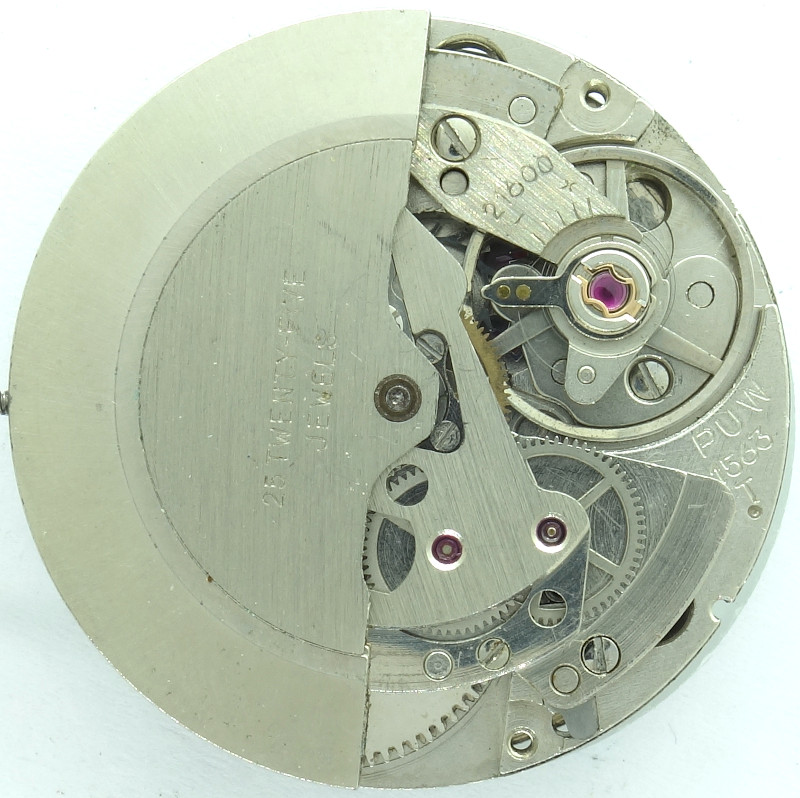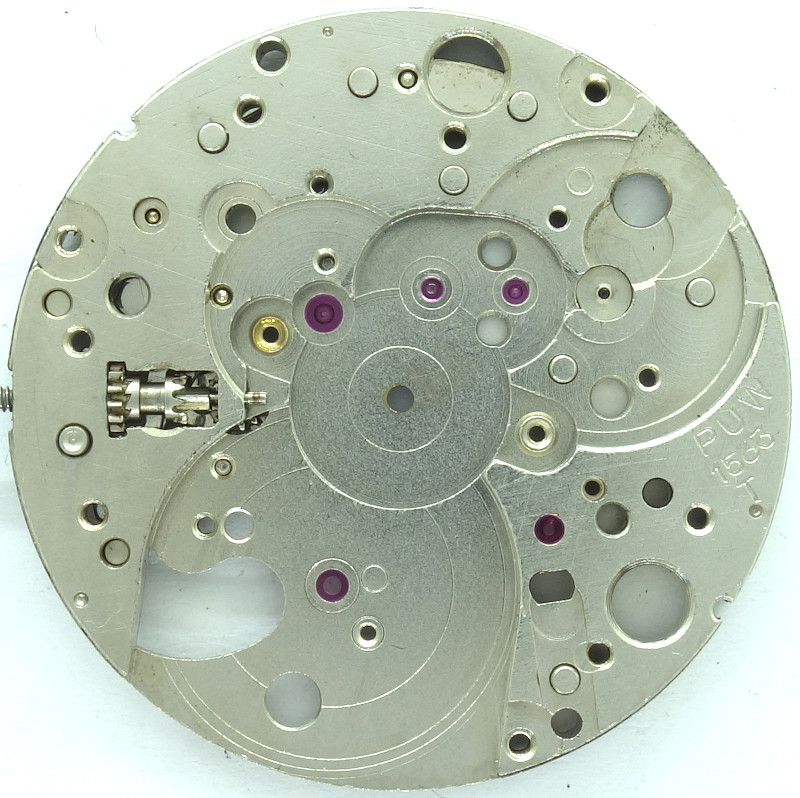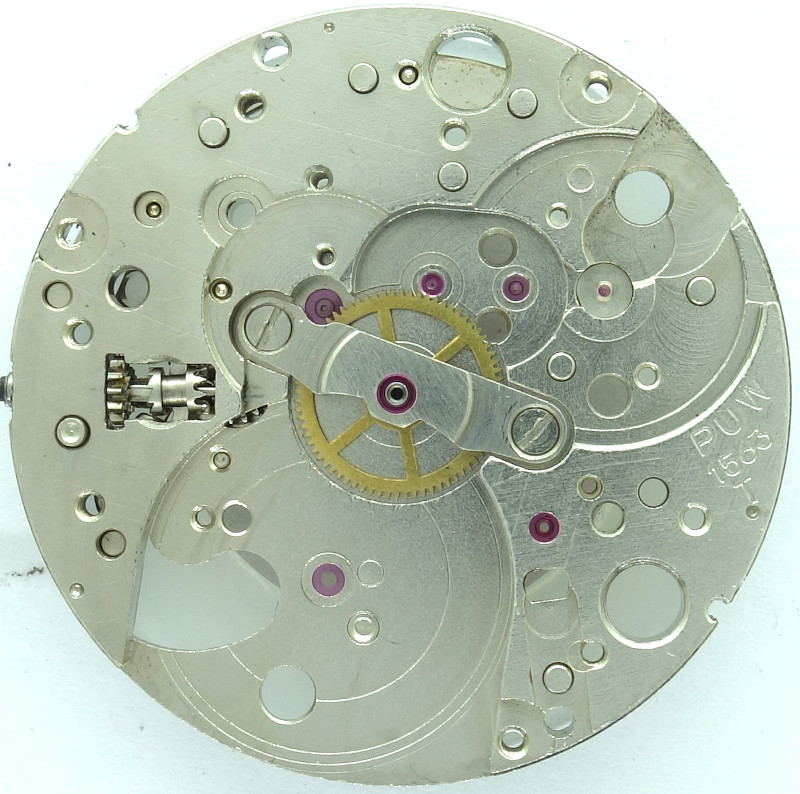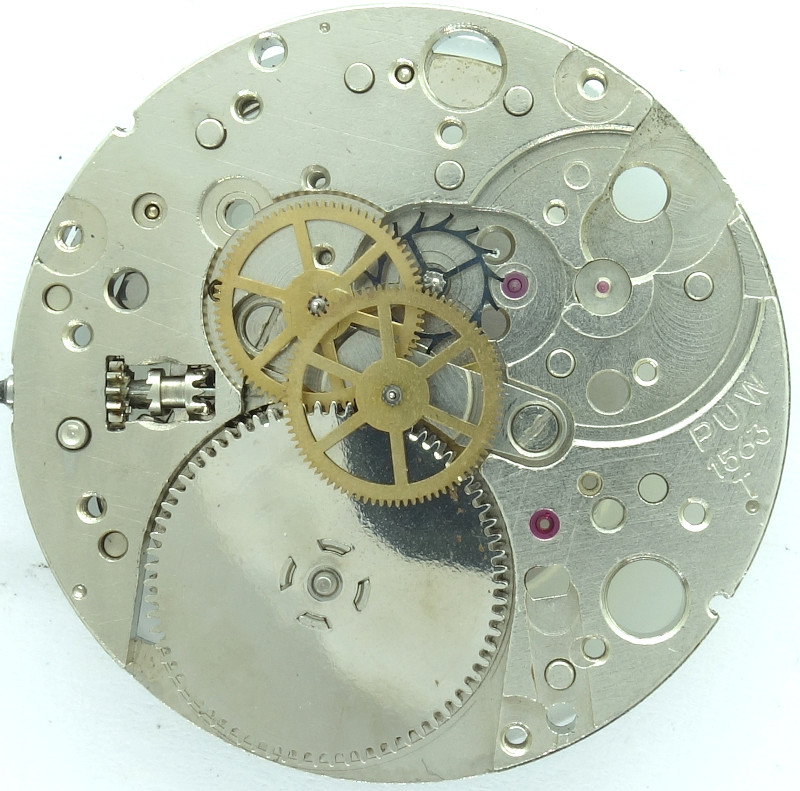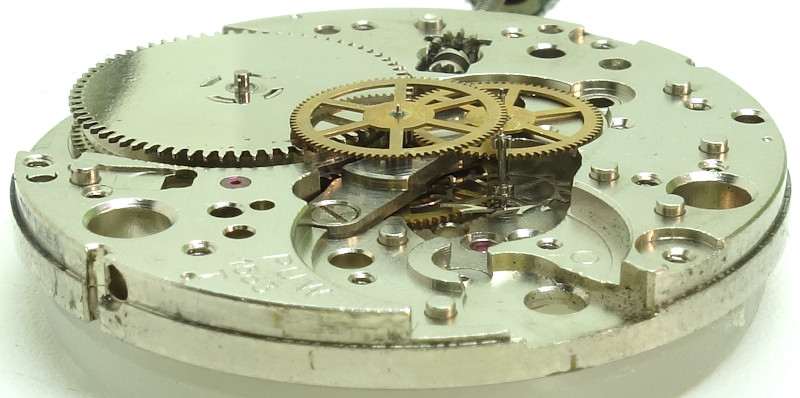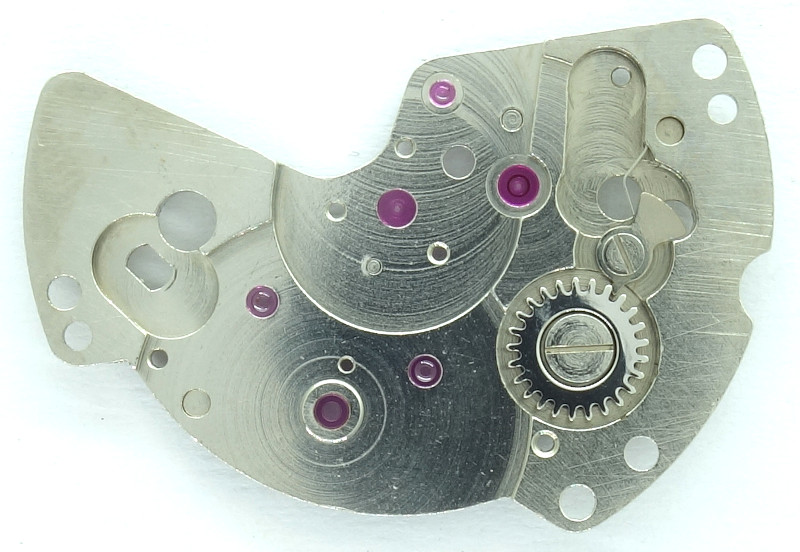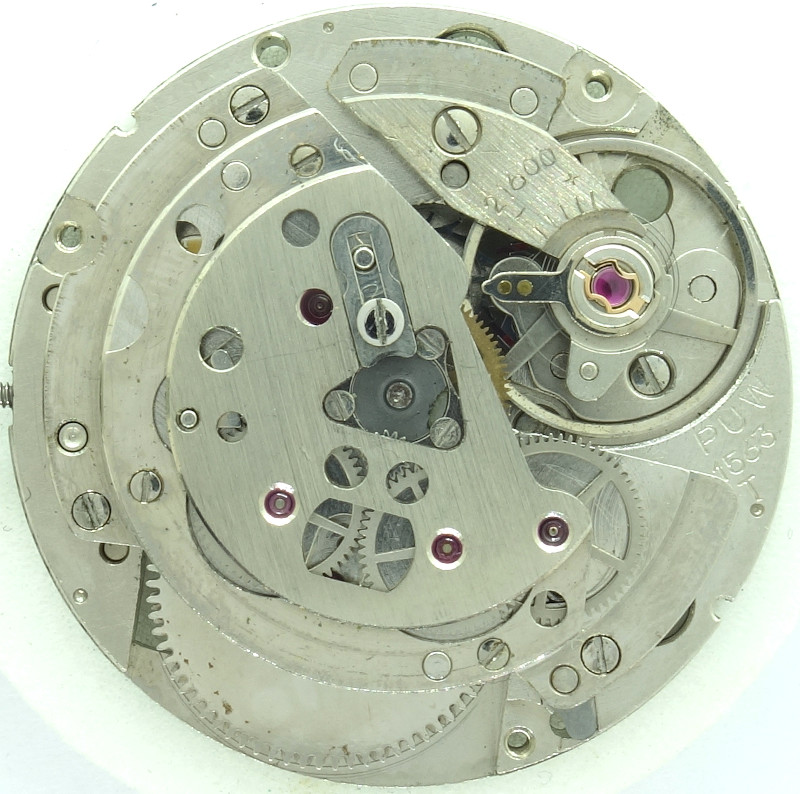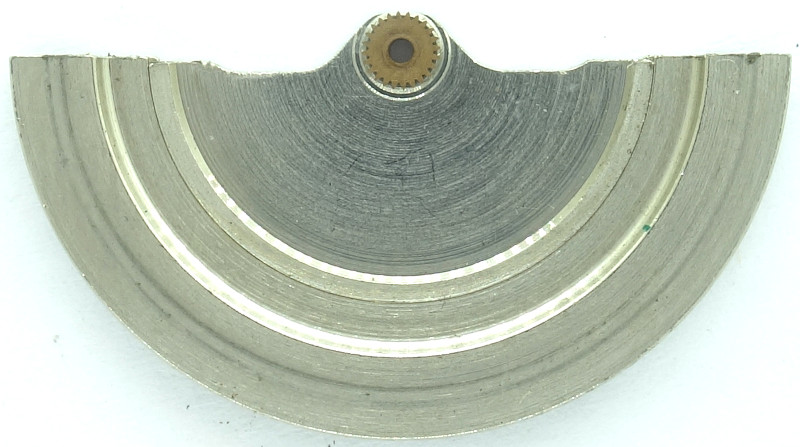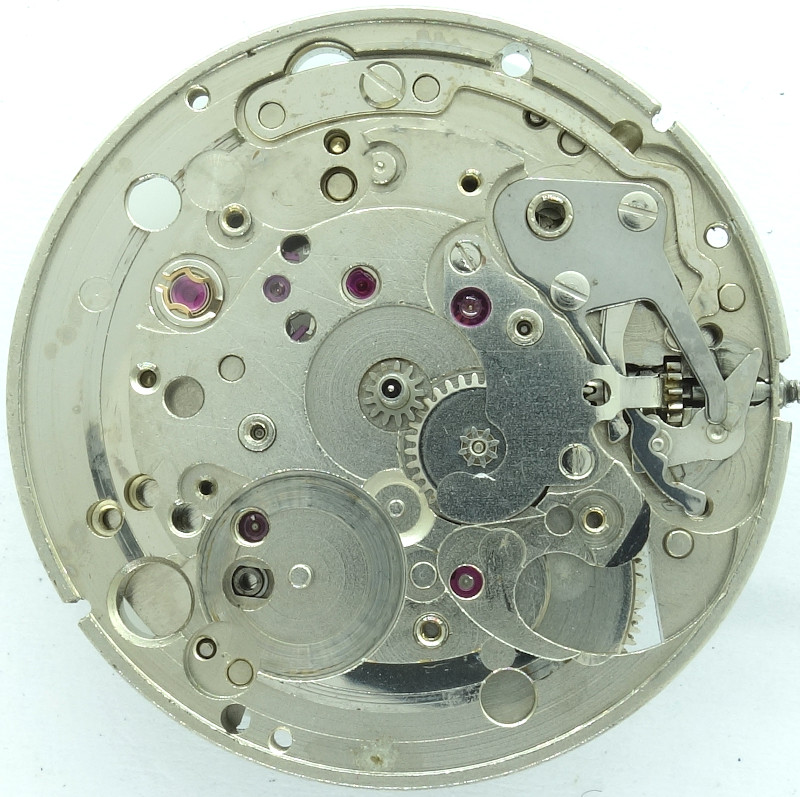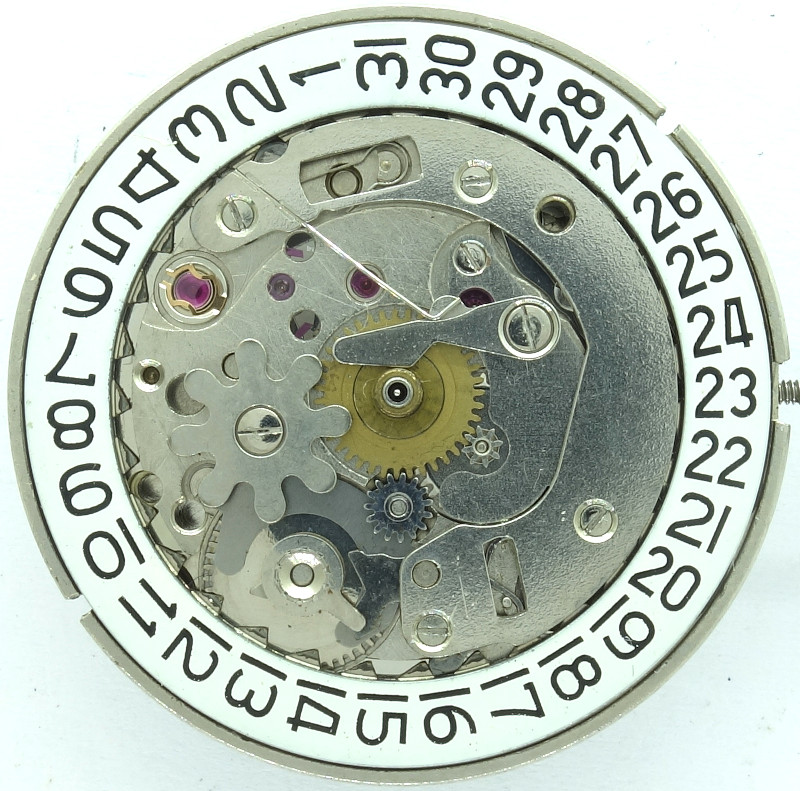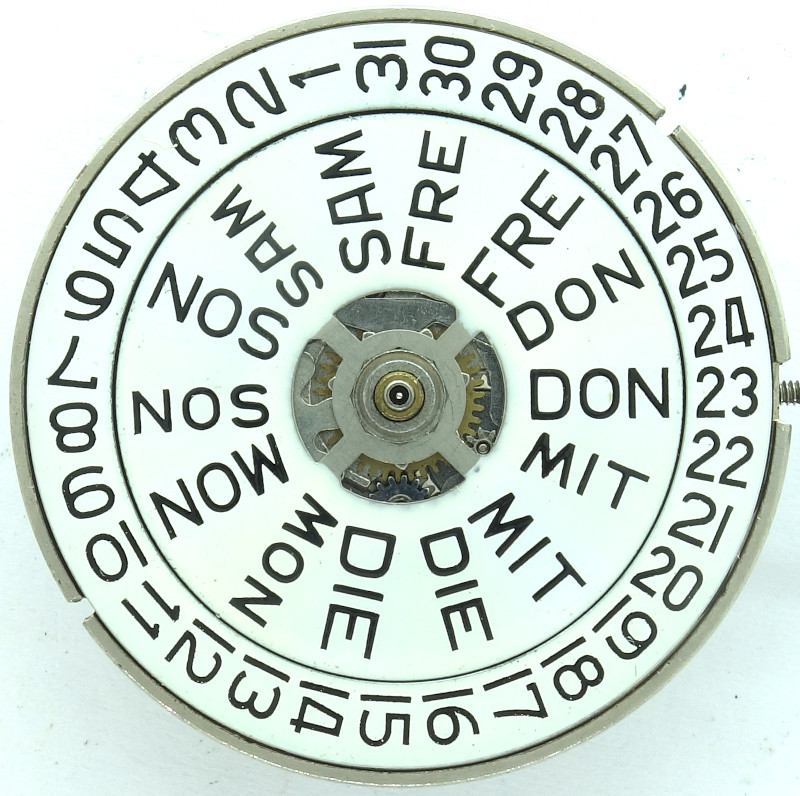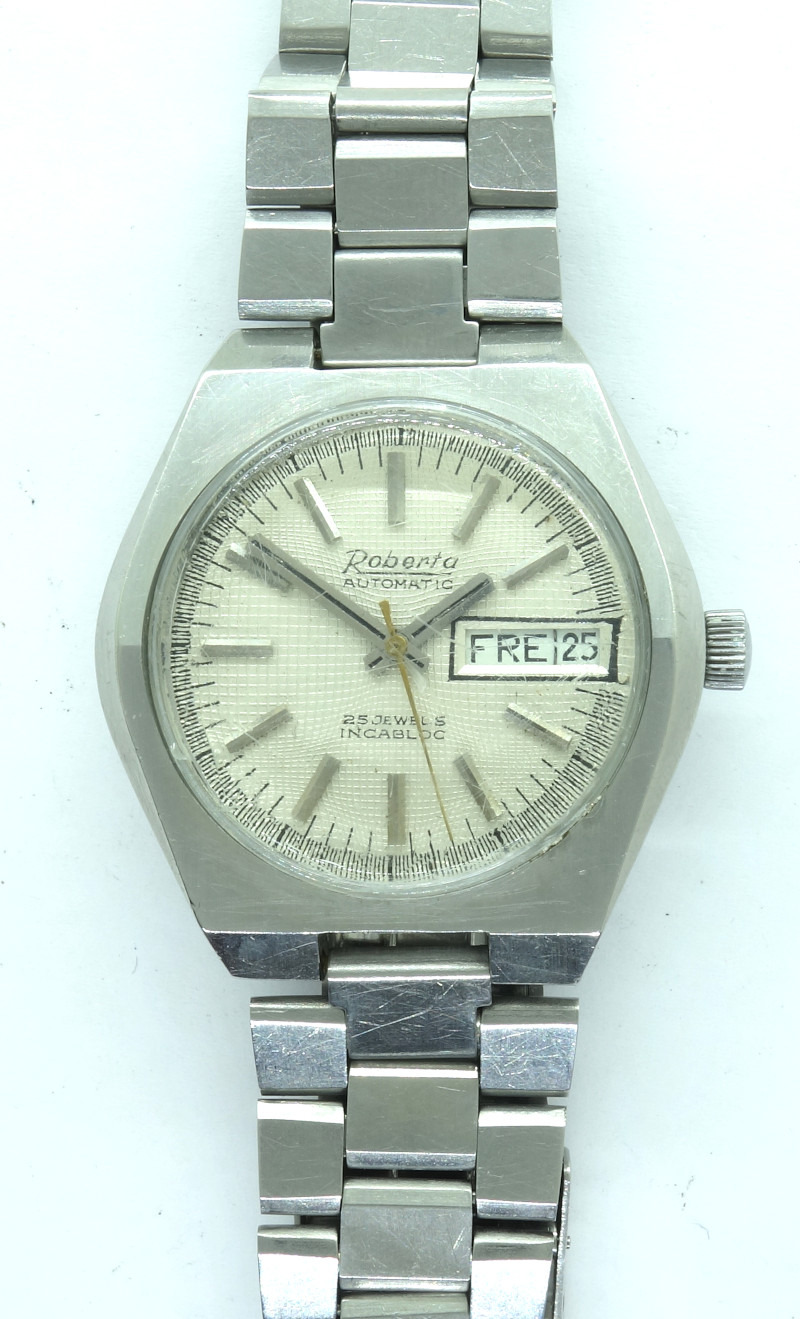Description
With all possible functions (automatic, center seconds, day-date indication), this 11 1/2 ligne caliber PUW 1563T was the maximum version of the german caliber series PUW 560/1560.
Curiously, it has got a twin, which only differs by a slightly larger base place, the caliber PUW 1564T.
As all PUW movements, it is of high quality, which shows a view onto the base plate. Even the mainspring barrel is ruby-beared, a detail, you won’t find on many movements.
Unlike ETA, PUW always used the classical gear train with a directly driven center minute wheel. Here, it is even ruby-beared.
As you can see, an especially large mainspring barrel is used, and there’s a lot of space for a large balance wheel.
The other parts of the space-saving gear train follow the known standard with third wheel, center seconds wheel and escape wheel.
Of course, the three-leg anular balance is shock protected, here in two Incabloc shock protections. It beats with contemporarily standard 21600 A/h, which can be regulated at the hairspring key only.
To save space, the ratchet is located on the inner side of the gear train bridge and engages with the crown wheel and not with the ratchet wheel. Additionally, there’s no separate barrel bridge, but the mainspring barrel is also beared unter the gear train bridge.
The selfwinding mechanism is not integrated into the movement, but put on top of the gear train bridge.
The selfwinding mechanism is as simple as genious:
Technically, we have a rocking bar changer, but the small wheel at position 7 o’clock near the center is not mounted on a rocking bar, but flying-beared. Depending on the rotation direction of the oscillating weight, it engages either with the left or with the right changer wheel.
Since both changer wheels are connected and the left one can only turn in one direction because of a ratchet, these changer wheels implement a rectifier.
After these wheels, a reduction wheel follows, and then another flying-beared wheel, located at position 5 o’clock near the outside, which drives the mainspring barrel. Its flying bearing ensures, that when the mainspring barrel is wound manually, it disengages the selfwinding gear train and so lowers its wear and tear.
A nice characteristic of PUW selfwinding movements it the perfect purring, when the selfwinding mechanism is active. Hardly any other manufacturer gets this purring so nice.
The oscillating weight is axle-beared and locked with a tab onto the axle.
Of course, all bearings of the selfwinding mechanism, except the two flying-beared gears, contain rubies, so that the PUW 1563T uses 25 jewels in total.
On the yet empty dial side, you can already see the preparations of the complex calendar mechanism.
It offeres an instant switching date indication, a slowly advancing weekday indication and a quickset mechanism for the date by pushing the crown.
At position 11 o’clock near the center, you see an rectangular cap jewel for the escape wheel bearing. Since this jewel cannot (or at least not with simple methods) be removed, the cleaning of the escape wheel ruby is made more difficult.
.Unfortunately, the calendar mechanism is constructed in a very complex way and leads to cursing, when you have to work on it:
The whole mechanism is flying beared and is under tension. The central item is the snake-shaped spring and the (here not really visible but on the PUW 1564T, you can see it) lever, driven by pressing the setting lever, which controls the date switching lever at position 6 o’clock.
To top it all off, the detent lever for the date ring, at postion 11 o’clock, is provided with a flying-beared spring.
The 8-point switching star left on the image slowly advances the weekday. It is driven by the switching wheel at position 7 o’clock, like the the instantly changing date.
The weekday disc has got 14 positions, but the weekdays always written twice in a row. The reason is the long switching time, which otherwise would lead to blank weekday windows for several hours, but with two consecutive items, most of the time, the actual weekday is visible during the switching time, too.
Altough this movement can absolutely compete with the contemporary ETA movements, and even outperforms them on the selfwinding mechanism, you have to acknowledge without envy, that ETA implemented their calendar mechanism in a much better servicable way.
In the lab
Timegrapher result
The rates are really good, only two little runaways in hanging positions, and show the high quality of this movement.| horizontal positions | |||
|---|---|---|---|
| dial up | +3 s/d | 304° | 0.2ms |
| dial down | +-0 s/d | 325° | 0.1ms |
| vertical positions | |||
| crown right (12 up) | +13 s/d | 256° | 0.5ms |
| crown up (3 up) | +4 s/d | 269° | 0.8ms |
| crown left (6 up) | +6 s/d | 265° | 0.5ms |
| crown down (9 up) | +18 s/d | 259° | 0.2ms |
Technical data
| Manufacturer: | PUW |
| Caliber: | 1563T |
| Caliber base: | PUW 560 |
| Size: | 11 1/2''' (measured: 25,6mm) |
| Height: | 5,75mm |
| A/h: | 21600 |
| Number of jewels: | 25 |
| Escapement: | Pallet lever |
| Balance types: | monometallic anular balance (three legs) |
| Shock protection(s): | Incabloc |
| Balance bearing / direction hairspring: | Clockwise |
| Moveable stud: | yes |
| Adjust mechanism: | Hairspring key |
| Construction: |
|
| Construction type: | solid construction |
| Winding mechanism: | yoke winding system |
| Setting lever spring: | 3 hole(s) |
| Attachment of setting lever: | plugged |
| Features: |
|
| Inventory number: | 23011 |
